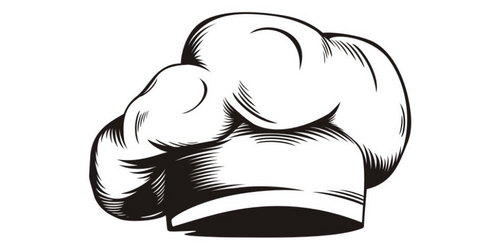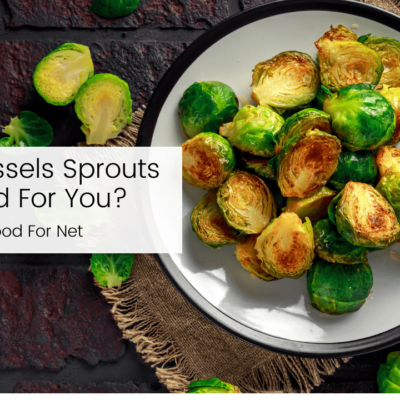
Cauliflower has long been a mainstay ingredient. It’s one that’s regularly served on dinner plates, often alongside broccoli, and doesn’t seem all that exciting. Yet, cauliflower has really taken off in recent years. It’s gone from being a dull vegetable that no one cares about to something that’s suddenly become fascinating.
Much of this interest comes from the fact that cauliflower is low carb, gluten free, and bland. The blandness means that cauliflower can be used to create products like cauliflower rice, cauliflower bread, and cauliflower pizza crusts. You can even add cauliflower to smoothies for extra nutrients.
This begs the question – what happens when you have too much cauliflower? Or, want to buy plenty because there’s a really good special, but don’t know what to do with it after?
There aren’t many long-term storage options for the vegetable, so you’ll likely want to learn how to freeze cauliflower. Freezing cauliflower is as simple as separating out the florets, blanching them, letting them cool and dry, then bagging them for the freezer. Of course, there are important factors to consider, like whether to freeze cauliflower as it is or make cauliflower rice first.
How To Freeze Cauliflower
Freezing cauliflower is a simple process. There’s some basic prep work, then you just need to blanch, cool, and dry the cauliflower and get it into the freezer. The blanching step takes a little time, but it’s not too bad once you find your rhythm.
Steps For Freezing Cauliflower

Wash And Prep
The first step for freezing cauliflower is the same for most vegetables – you wash and cut. Washing helps to remove any debris and dead insects, making the cauliflower safer to eat.
As for cutting, the goal is to remove the stems and cut the florets into a uniform size, typically around an inch or two. You can freeze the stems if you really want to, but this typically isn’t worth the effort.
If you’re really concerned about insects, try soaking the cauliflower pieces in a saltwater solution for around 30 minutes, then draining and rinsing the cauliflower thoroughly.
Blanch And Cool
The next step is blanching, which helps preserve the color, flavor, and texture of your cauliflower. The traditional approach involves briefly immersing the cauliflower in boiling water, removing the cauliflower, and then quickly immersing it in ice water.
However, it’s actually better to steam the cauliflower instead of boiling it. This still has the same impact on the enzymes in your cauliflower, but fewer nutrients are lost when you take the steaming approach.
Either way, you need to be careful with your timing. Boiling or steaming your cauliflower for too long will mean you overcook it, leading to a much less appealing texture after freezing.
Once you’ve blanched the cauliflower, you’ll then need to cool it. Don’t skip this step, as freezing warm cauliflower will lead to ice crystals, which dramatically decrease the vegetable’s quality.
Pre-Freeze On A Tray (Optional)
The next step is pre-freezing. This involves lining a baking tray with parchment paper and spreading the cauliflower out on top.
Make sure none of the cauliflower florets are touching, then carefully place the tray in the freezer. You’ll need to wait an hour or two, until the cauliflower is firm to the touch.
Doing this stops your cauliflower pieces from freezing together. So, even once the cauliflower is in a bag, you’ll be able to grab a handful of pieces out whenever you need to.
Bag And Freeze

After blanching or pre-freezing, you can then take your cauliflower pieces and place them in a freezer-safe container (or freezer bag). Get as much air out as possible, label the container, and put it in the freezer.
Is Blanching Essential?
While blanching is an important step, it isn’t essential. You could potentially just prep and freeze your cauliflower – and it would still be safe to eat once thawed.
The big issue is quality. Blanching deactivates key enzymes in cauliflower, which then reduces deterioration. Skipping this step typically gives you mushier cauliflower that doesn’t have as much flavor.
If you are going to skip blanching, be sure to use your cauliflower within three months of freezing. The quality differences between blanched and unblanched cauliflower are less obvious within this window, giving you the best possible outcomes.
Other Ways To Freeze Cauliflower

If you use cauliflower rice regularly, you might try making this first and freezing it.
Some people simply press excess moisture out and freeze the cauliflower rice immediately, while others blanch it first. Both approaches work well, although the unblanched version may be a little softer than the blanched.
Another trick is to make cauliflower puree and freeze it. The puree can be as simple as cooked cauliflower blended with water or may use extra ingredients like butter or herbs to improve the flavor.
Regardless of the ingredients, the puree can be spooned into a freezer bag or an ice cream tray and frozen that way. While cauliflower puree isn’t as versatile as frozen pieces of cauliflower, it’s still a useful ingredient in many situations.
Tips For Freezing Cauliflower
Freeze High-Quality Cauliflower
First, it’s important to freeze decent cauliflower to begin with. Soft or discolored cauliflower isn’t a good candidate for freezing.
After all, the freezer doesn’t revitalize your produce. It just hits pause on the deterioration for a little while. So, if the cauliflower was of low quality before you put it in the freezer, it will be just as bad (or worse!) after thawing.
Seriously. Inferior cauliflower just isn’t worth the effort.
Dry It Completely
The washing and blanching steps both add water, so it’s crucial to get your cauliflower completely dry before freezing it. Even a little excess moisture contributes to freezer burn, which then lowers the quality of your cauliflower.
Think About Your Portion Sizes

As part of the freezing process, you’ll need to decide the amount of cauliflower to put in your freezer containers or bags. When doing so, it’s worth thinking about how you’ll use the cauliflower after it has been frozen.
If you batch cook or make large meals, you might go with large bags of frozen cauliflower. But, if you’re likely to use just a little bit at a time, try focusing on small bags of cauliflower instead.
Label The Cauliflower
Not labeling the container is a common and frustrating freezing mistake. After all, it’s tough to tell what’s in the container after a few months and you’re not likely to remember.
Be sure to label the cauliflower well. This includes writing what’s in the bag and the date it was frozen.
Use It Within Six Months
Cauliflower should last at least a year in the freezer, but the quality decreases over time. For the best results, it’s best to use your cauliflower within six months of placing it in the freezer.
Rotating your cauliflower can help you achieve this goal. So, whenever you add new containers of cauliflower, make sure they’re placed behind the old ones in your freezer. This way, you’re always using the oldest cauliflower first.
How To Use Frozen Cauliflower

Frozen cauliflower can be thawed by placing it in the fridge overnight and then used in much the same way as fresh cauliflower. However, you can often skip this step and cook the cauliflower straight from frozen.
Stir frying frozen cauliflower is a fantastic way to begin, as the high heat stops the cauliflower from getting soggy. You can also roast or steam your frozen cauliflower if you wish. Just be sure to adjust the cooking time, as frozen cauliflower will always take longer to cook than fresh cauliflower.
Frozen cauliflower can even be used in smoothies. Here, it adds plenty of nutrients and helps with the smoothie texture, while the vegetable’s flavor is barely noticeable.
Other times, you may want to thaw your cauliflower first. Thawed cauliflower is fantastic in recipes where it will be mixed or blended with other ingredients.
Thawed Cauliflower Vs Fresh Cauliflower
The process of freezing irreversibly changes your cauliflower. Once thawed, the vegetable ends up mushier and with a milder flavor.
These flavor and texture differences are most noticeable in recipes where cauliflower is the star ingredient. If the cauliflower has been blended or mixed in with other ingredients, you mightn’t notice the difference.
The nutritional impact of freezing cauliflower is fascinating. You might expect the frozen version to be less nutritious than the fresh, but this often isn’t the case. Frozen cauliflower can actually offer just as many nutrients, because it is frozen at the height of freshness.
Besides, you’re certainly getting more nutrients from frozen cauliflower than from eating no cauliflower at all.
Other Ways To Preserve Cauliflower

Dehydrated Cauliflower
Dehydration is a fantastic way to preserve food. The process involves using an oven or dehydrator to remove most of the moisture from cauliflower. Doing so extends the shelf life considerably, while making the cauliflower crisp and brittle.
As with frozen cauliflower, you’ll need to wash and blanch your cauliflower before you dehydrate it. You also need to make sure all the pieces are of a similar size or they’ll dehydrate unevenly.
It’s even possible to freeze cauliflower, thaw it, then dehydrate it. This could be useful if you initially froze your cauliflower, but later started running out of freezer space.
Once dehydrated, the cauliflower should be stored in an air-tight container until you’re ready to use it. You can then use the cauliflower as-is or rehydrate it. The rehydrated version works well in some recipes, while the dried version is excellent as a snack.
You can even make dehydrated cauliflower popcorn by tossing the cauliflower with oil and spices before dehydrating it in the oven or air fryer.
Fermenting Cauliflower
Fermenting is an interesting approach. It gives your cauliflower a distinctive tangy flavor, extends its shelf life, and adds many powerful probiotics.
Here, you’re using an approach known as lacto fermenting. This involves placing the cauliflower pieces in clean jars and covering them with a salt brine. You can stick with just cauliflower pieces here or add other ingredients too, like hot peppers or garlic.
Critically, the ingredients in your jars should always be entirely covered by the brine. Don’t let any stick out, as this is where you run into issues.
Once the cauliflower is prepped, it’s mostly a waiting game. You just need to loosen the top and ‘burp’ the jar every day to allow the gasses to escape.

















 How To Freeze Broccoli
How To Freeze Broccoli